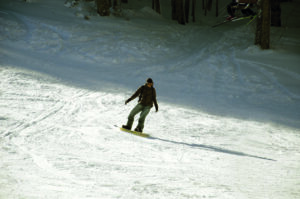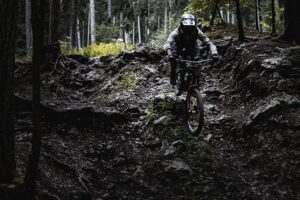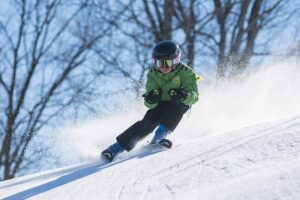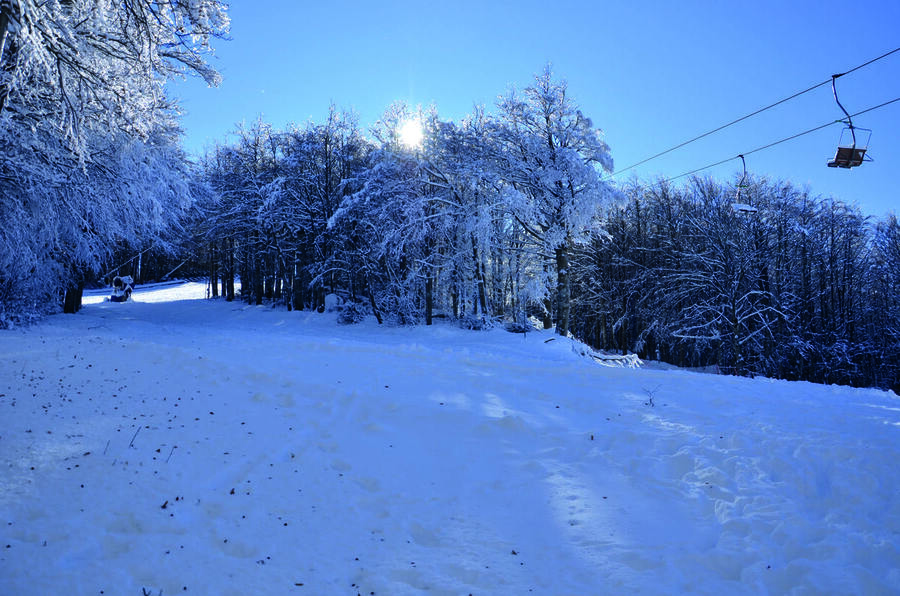By Nicola Ciuffoletti
For the second year in a row (it is not that the previous ones had gone better), the tourist economy of Monte Amiata, and especially of the upper part of the mountain, has again suffered a strong blow, partly due to the scarcity of rainfall but also due to the total lack or inadequacy of the water resources available for the activation of the snowmaking system.

The tourism and accommodation sector is therefore coming out of winter weakened and at the same time optimistic for the current spring and the upcoming summer. For those who live on tourism and try to invent and reinvent themselves, there are many observations to make. In short, the forced closure of the ski lifts is a theme to be developed, a condition from which the Amiata must learn to come out alive. The first big problem was the lack of water, even before natural snow. “Throughout the season – explains Luciano Porcelloni, Tuscan manager of Federfuni and vice president of Isa srl – we have monitored and documented with graphs, photos and images (thanks to the web cams and the two weather stations installed in Vetta and Prato delle Macinaie), the situation of snow on the tracks, temperatures and cold “windows” that would have allowed the opening (even if partial) of some slopes and school camps in the mountains, at least for 40/50 days”. The documents, graphs and photos of the tracks show that from an altitude of 1,730 to an altitude of 1,550 there has never been a lack of snow (little or a lot). “So – continues Porcelloni – we could not ski and open the lifts because the snow was missing from an altitude of 1,450 to 1,550. It means that, if we had only had a few thousand cubic meters of water available, on the Grosseto side, we could have opened at least for about 40/50 days, a long slope and three school camps (Direttissima, Asso di Fiori, Jolly and Tappeto delle Macinaie) guaranteeing work to the activities of bars, restaurants, rentals, accommodation activities and ski instructors. A direct employment of about 200 people between the Sienese side and the Grosseto side (the data are provided by a study carried out by a municipality of the Terre Alte dell’Amiata)”. Unfortunately, the shortage, I dare say, the total lack of water (for the second year in a row) did not allow the snowmaking system to be activated. “What is worrying is that, to date, no operational proposal on the various water supply systems (Lago Verde, Pratolungo Reservoir, Artesian Forum) – explains Porcelloni – has obtained an executive worksite and, consequently, even next winter we will have to make up (barring further breakages of the sheet which is now almost 30 years old) with the water present in the Pratolungo reservoir which can only partially satisfy, very partially, situations like those that occurred in the last two seasons”.

The question then arises: What does the missed season mean as an economic loss for the territory? “We start from the assumption that snow represents a great economic resource and that it allows (even if only for a few months a year) to be able to create presences and influxes of people, in our mountain,” he explains, “which allow the various operators, staff, instructors, to be able to have a source of income that “helps to maintain” the presence of people at work in the area. The economic damage is not only a loss of income or a financial loss (which in these two seasons represents several million euros) but also the “loss” of all that workforce who, no longer being able to support themselves with the work of the winter season, seeks more dignified living conditions in other occupations, or with the exodus from these villages. Masters who go to work in other stations, staff who move to other places or who, at best, change jobs. This state of affairs also affects other seasonalities and above all contributes to the impoverishment of all tourism-related activities. With summer alone, we cannot think of “holding” all the activities related to the mountains open”. In summary, it is evident and undeniable that the mountain economy has suffered a strong backlash due to climate change that has been taking place for several years and that the snow level has risen, forcing us, lacking natural snow conditions in some periods of the winter season, to intervene with the preparation of programmed snow (especially during the Christmas holidays), This commitment creates the “guarantee” of seasonality and, it should be emphasized that much of the benefits produced by programmed snowmaking does not fall only on the lift operators but on the entire mountain area. In short, the operators would not be able to survive with the summer season alone and from this awareness the NonSoloNeve project was born. “We began to create tracks for bikes, e-bikes, mountain bikes and above all to “exploit” the ski lifts and slopes for freeride and downhill tracks and we can proudly say that to date, we have become the first resort in central Italy and the third in the national field for these disciplines – continues Porcelloni -. Amiata is committed, in addition to making existing infrastructures safe and energy efficient, with projects that help the production system of our ski resort to identify a specific strategy to accompany climate change through both medium-long term planning in terms of investment (strengthening of the artificial snow system, creation of paths for trekking, Forest Bathing, nature trails, etc.) to achieve a diversification of our sports facilities to a different use and for a new “cultural” approach aimed at enhancing the ski lifts that goes beyond the limits of the current snow system. The object of this project and the related interventions is precisely to equip the Amiata with this type of structure in order to complete the tourist offer of the area and meet the needs of a good part of potential users”.

For Porcelloni, the objectives to be achieved are the creation of play areas sized on the basis of users and dedicated to preschool and school children and the creation of areas with dedicated structures suitable for recreational activities. It is important – he says – to increase the use of the tourist offer by users, “snow-goers” in winter and “meadows and woods” in summer, but not interested in alpine skiing or cycling sports with the creation of new attractions suitable for all seasons.We must commit ourselves to creating sled, sledding or bobsleigh tracks and to decongest areas of maximum affluence through the redevelopment of neighboring areas dedicated to specific recreational / recreational activities with greater safety and satisfaction for users”. There is no doubt, therefore, that in the face of this situation, Amiata is at a crossroads and the path to take is the one where it is possible to increase the tourist and economic value of the mountain, through the services offered, with attractions that, by their nature, can be used both in winter and in other seasons, allowing a lengthening of the seasonality and consequently an increase in tourist presences. The projects that have had the opportunity to be presented and, in some cases, already financed take this aspect into account and have been conceived, designed and built first of all with the Municipal Administration of Castel del Piano and the Tuscany Region and then also in collaboration with the activities, associations and companies that carry out the primary activities of tourist attractions such as snow in winter, biking in summer, Wellness Tourism or the outdoors in general throughout the year.
